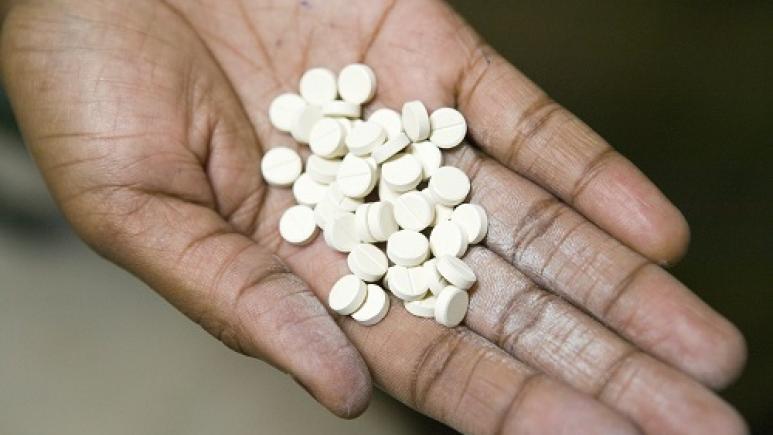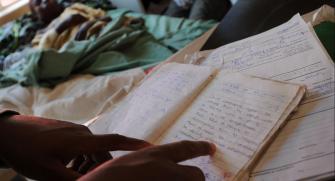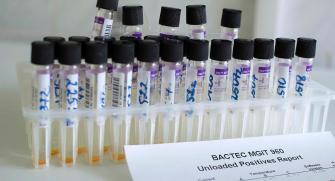HIV: demonstration of the effectiveness of a program to end the epidemic
What was the context of your survey?
Nolwenn Conan: The objective of the study was to measure progress in diagnosis, treatment uptake, and viral load suppression among people living with HIV five years after a first survey was conducted in 2013 in KwaZulu Natal. This region of South Africa has one of the highest HIV infection rates in the world, with one in four people living with HIV. MSF has been working with the South African Department of Health since 2011 in a program called "Bending the Curve" (1) to improve access to diagnosis and treatment.
What is the program about?
NC: It is based on the “test and treat” principle to suppress the viral load. Since 2016, the WHO has been recommending the "test & treat" program, which consists of testing and treating all HIV-positive people right away, regardless of their CD4 count. It is now accepted that high coverage of ARV treatment reduces the viral load until it falls below the detection threshold. As a result, the virus no longer destroys the immune system of infected people, allowing them to stay healthy and not develop diseases related to immunosuppression. In addition, the person can no longer transmit HIV and treatment becomes a means to reduce the incidence of HIV. The Joint United Nations Programme on HIV/AIDS (UNAIDS) has set the goal that 90% of people living with HIV and on treatment will have a suppressed viral load based on this principle.
The program set up in KwaZulu-Natal in 2011 relies on community-based interventions with prevention activities, door-to-door testing and fixed sites. It reaches people living with HIV who do not have access to conventional health services. It also supports health care facilities to promote early initiation of antiretrovirals, and implements differentiated models of care to deliver treatment and maintain people on treatment. The program involves a wide range of people from local civil society, including patient groups, health staff, and traditional leaders.
How did you go about your study?
NC: We conducted 2 community-based surveys using the same methodology 5 years apart, one in 2013 and one in 2018. Each randomly selected participant aged 15-59 living in the area was interviewed and given a rapid HIV test. If positive, further blood tests were performed to measure the level of immunity through CD4 counts, as well as viral load. 3,278 people were recruited in this way in 2018.
What are the main results of the study?
Our study showed a marked improvement in the proportion of individuals with a suppressed viral load among HIV-positive individuals. While it was 57% in 2013, it increased to 84% in 2018, and this increase is observed across gender and age groups, giving hope that HIV infections have decreased in this population over this period.
Furthermore, in 2018, in the KwaZulu-Natal region, 90% of people living with HIV knew their status, and among them, 94% were on ARVs, an increase compared to 2013 when these proportions were 75% and 70% respectively.
There remains, however, the downside of men aged 15-29, only half of whom had an undetectable viral load in 2018, with the other half remaining at risk for HIV transmission. In addition, one-third of respondents in this age group were unaware of their HIV infection at the time of the survey, although nearly half had been tested less than a year prior to the survey, suggesting that the infection was recent. Additional and targeted efforts must therefore be made to reach this population, while maintaining the good results in other population groups, especially since the Covid-19 pandemic has led to a large setback in the fight against HIV.
What conclusions do you draw from this?
NC: The proportion of participants who know their HIV status and are on ARV treatment has significantly improved between 2013 and 2018 in all age groups. This project confirms that the UNAIDS 90-90-90 targets are achievable in a region with a high rate of people living with HIV.
This success is largely due to the involvement of community services and clinical support at the primary care level, but also to the implementation of the "test and treat" program by WHO since 2016.
- Le projet "Bending the Curves" de MSF a débuté en 2011 avant que les objectifs 90-90-90 ne soient fixés par l'ONUSIDA en 2013 ; il visait à réduire l'incidence des nouvelles infections par le VIH ainsi que les maladies et les décès liés au VIH. https://msfaccess.org/bending-curves-hiv-south-africa









